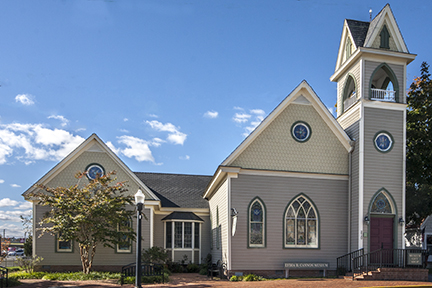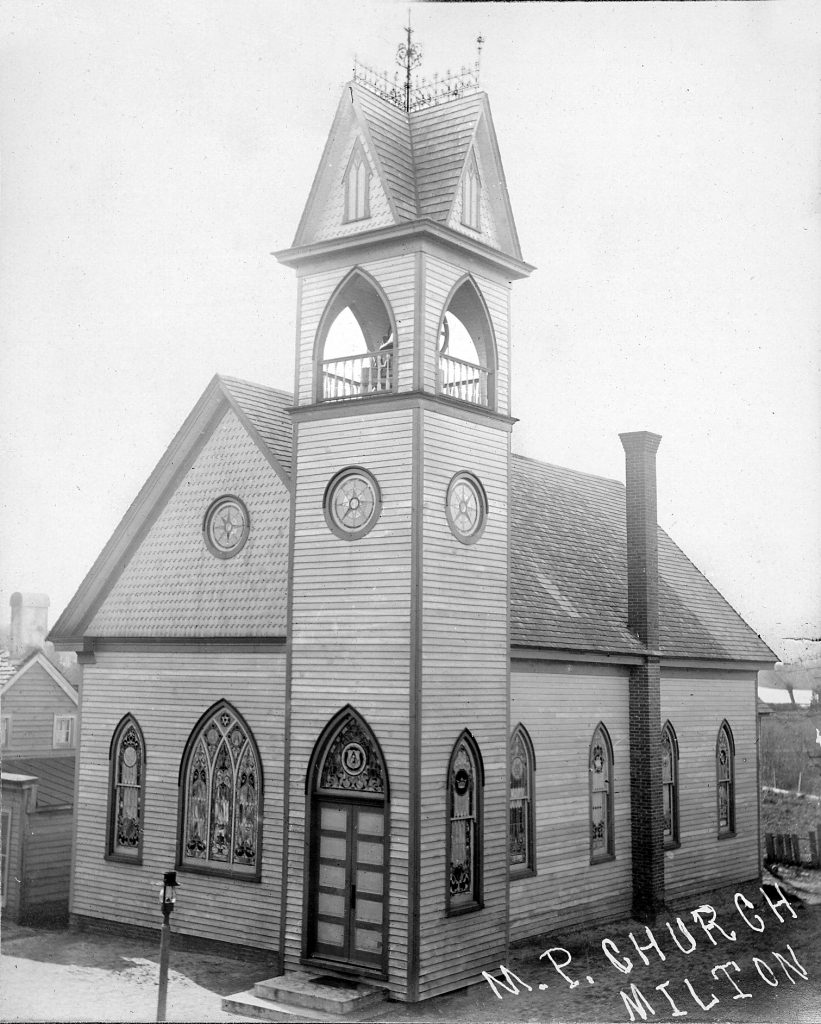
When I first photographed the stained glass in the Lydia B. Cannon Museum, I was a bit frustrated in not being able to get close enough to any of the four compass rose windows for a decent shot. While they are visible from the outside, like most stained glass of their time the compass rose windows are best viewed from the inside of the building, with light streaming through them. Unfortunately, none of them can be viewed from the inside except for one located in the attic of the annex, off limits to visitors and ventured into only rarely by volunteers and museum staff.
Now, with a better camera and some moving of obstacles, I’ve been able to get the photograph I wanted (see above).
The image below shows the museum as it appears today, the result of the 2006 renovation and re-dedication. Three compass rose windows are visible, with a fourth on the right (north) side of the bell tower.

The photographs below were taken sometime after the 1906 renovation and show the original placement of the windows. I have never come across a photograph of the church taken from the rear. These pictures also beg the question: where is the fourth compass rose?


(courtesy Milton Historical Society)
There are two possible explanations: the fourth window was located at the rear of the bell tower and was relocated to the front of the attic above the annex, or it was located at the rear of the attic above the main worship space, putting it above the chancel. There are more questions, which are not likely to be answered except by older Milton residents who were members of the congregation before it was dissolved in 1962. Was the vestibule open to the floor under the bell itself, so that the compass rose windows could be seen from the entrance as churchgoers walked in or out? Was the attic space above the worship area used at all, so that its compass rose could be seen from the inside? If the answer to both of these questions is no, then why were the compass rose windows installed where their beauty could never be fully appreciated?
I invite anyone who can answer any of the above questions to comment on the post, or to send me an email through the blog.

Looks great Phil!